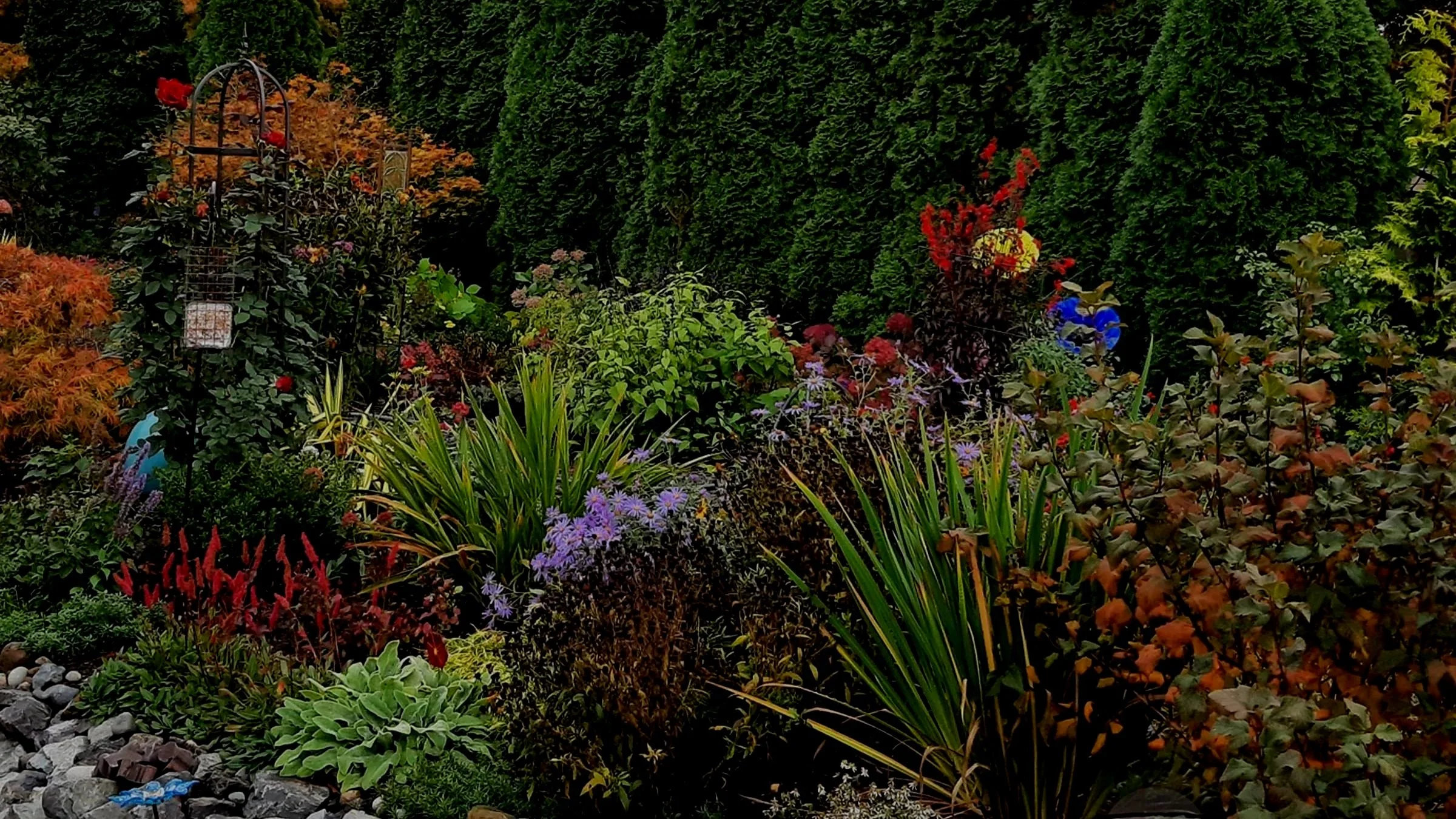I would never have dreamt that I would be talking about such a “dry” subject (pun intended of course) as watering in the middle of October, but here we are, dealing with one of the longest stretches of no rain that I can remember in the 30 plus years that I have lived in the Pacific Northwest. Not only is it dry, but it is also unseasonably warm, with records being broken going back decades. Whether this is an anomaly or our new normal, the effects are what we have to deal with. The most obvious to me is that we can’t continue to do as we have for years and sit around and wait for the rains to come and rescue our landscapes, especially if we are planning on adding new plants to our yards. This became shockingly apparent to me the other day when I was planting some more perennials and bulbs (yes, there is always room for more plants) in the upper garden and discovered, that despite almost daily irrigating, once I dug down more than a few inches, the soil was absolutely parched.
Now, I should tell you that I consider myself an above average gardener who typically has a pretty good handle on the water needs of my plants. You can find me on the end of the hose, virtually every day, where I am watering some part of my garden. But because I have such poorly draining soil (despite yards and yards of amendments prior to planting), I have to be careful not to apply too much water or my soil will become too saturated, causing the roots to suffocate, and the plants to suffer. That is exactly what happened to me in the summer of 2021, when it got into the triple digits and I had the sprinklers running constantly. Several of my newly planted trees actually defoliated. Thankfully they recovered, but this year the opposite seems to be the issue. The Weeping Beech, Katsura, and Magnolia all look stressed, with 50% of their leaves burned or prematurely falling off. It appears now that I might have erred on the too little side.
It is really difficult to know when we have watered enough or when we need to apply more to our landscapes. The only sure-fire way to know is to dig into the ground and see what you get. You might be surprised to discover that what you thought was a deep watering was in reality only a one- or two-inch wetting of the soil. The goal is to get that water down at least a foot into the soil. It takes time and repeat applications to make it happen.
October is a fabulous month to add new plants to our landscape, and all of this sun and dry weather makes it just that much more enjoyable. But here is the catch… Never place a new plant in a dry hole and surround it with power-dry soil - it is the absolute kiss of death. Instead, once you have your hole dug, fill it with water and let it soak in. A 12-inch-deep hole could take as much as 12 hours to drain. Once the water has drained, place the root ball in the hole and return half of the soil, add more water, replace the rest of the soil, and build a generous moat (watering well is the technical term), filling it with water several times. If you do it right you may not need to water again for a week.
Don’t miss out on this “second planting season”! Just make sure you add plenty of water to the new stuff, as well as the established ones - it could be the difference between life and death.



